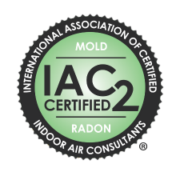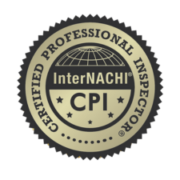Do I Have Mold in My Home?
If you think you may have mold in your home, start with the attic.
It happens more often than you’d think—usually during a routine trip to the attic for holiday decorations, only to discover spots and blotches creeping across the underside of your roof. Before panic sets in, it’s important to ask: do I have mold in my home, or is this something else? In many cases, it’s attic mold—and it’s more common in Montana homes than you might realize.
At 406 Home Inspection Pros, we often remind homeowners that your house behaves like a system. That’s right—what happens in one area (like your attic) is often influenced by seemingly unrelated factors, including insulation, ventilation, and even how your bathroom fans are vented.
Let’s take a closer look.
What Causes Attic Mold?
Mold only needs three things to grow: moisture, a food source (like wood), and the right temperature. Your attic checks all three boxes in winter if there’s an ongoing source of moisture.
You might assume the moisture is coming from a leaky roof, but in many cases, the roof is perfectly intact. So, what’s the real cause?
Warm, moist air from inside your home is sneaking into your attic—and it’s usually getting there through air leaks. During Montana’s long heating season, your kitchen, bathrooms, and laundry room can create a surprising amount of moisture. That warm, moist air rises—and unless your attic is perfectly sealed, it can find its way up through gaps around recessed lighting, attic hatches, chimneys, and more.
Once it hits the cold roof sheathing, that air condenses into water. Over time, this creates damp conditions that are perfect for mold to grow.
Why Mold in the Attic Is a Red Flag
Beyond air quality and potential health risks, attic mold is a warning sign that your home’s building envelope isn’t functioning as it should. And if your home has chronic moisture issues in the attic, it could lead to expensive structural repairs—not to mention sky-high heating bills.
This problem is also tied to a phenomenon called ice damming. When warm air escapes into the attic, it can melt snow on the roof. That water flows down and refreezes at the colder eaves, forming an ice dam. Eventually, water backs up under the shingles, potentially leaking into your ceiling and walls.
How to Prevent Attic Mold
If you’ve ever asked yourself, “Do I have mold in my home?”—especially after spotting something suspicious in your attic—it’s time to take action.
Here’s what we recommend:
- Inspect for air leaks around light fixtures, chimneys, pipes, and attic stairs.
- Check your attic insulation and ventilation. Proper airflow helps regulate temperature and moisture levels.
- Confirm all bathroom and kitchen fans are ducted completely outside, not just into the attic space.
- Seal and insulate gaps to prevent warm air from entering the attic during the winter.
Peace of Mind Starts With a Home Inspection
At 406 Home Inspection Pros, we take a whole-home approach to mold and moisture concerns. Our team understands how Montana’s climate, building practices, and seasonal temperature swings can all impact the health of your home.
If you’re wondering, “Do I have mold in my home?”—especially in the attic—schedule a comprehensive inspection with us. We’ll help you get the answers you need, and we’ll provide practical solutions to keep your home safe, dry, and energy-efficient. Call or text us:






Leave a Reply
Want to join the discussion?Feel free to contribute!